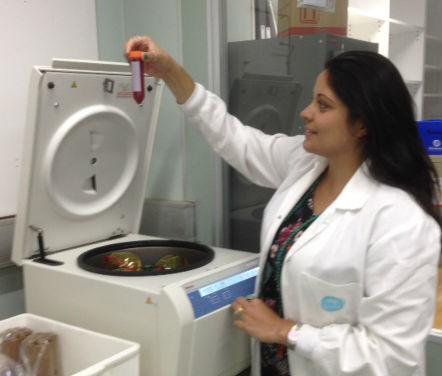IF ever there was a reminder we need to do something about plastic it’s the discovery mid-May of plastic rubbish in the Pacific’s Mariana Trench, said to be the deepest point in the ocean.
The United Nations estimates that more than eight million tonnes of plastic makes its way into the oceans each year.
The potential for plastics recycling is endless.
The role of R&D
A new report on the future of plastics recycling highlights the role science can play in finding solutions that will help expand the industry and reduce the plastics problem.
Katherine Locock, a CSIRO research scientist in manufacturing and honorary senior fellow at the University of Melbourne, is lead author of The Recycled Plastics Market: Global Analysis and Trends.
The report was launched in May at CSIRO’s Cutting Edge Science and Engineering Symposium, Waste Innovation for a Circular Economy.
Locock, an award-winning chemist and heavyweight in the Royal Australian Chemical Institute, presented results of her report and the research and development opportunities that could support the continued growth of the market.
Packaging accounts for 72 per cent of the plastic recycling market, projected to grow globally, she says.
"Plastic bags form an underutilised waste stream.
"Many of those interviewed as part of our project suggested that policy makers need to incentivise recycling plastic,” she says, adding that consumer power is mounting amid the “war on waste”.
The growing population in Asia, where landfill already exceeds capacity, makes the region an ideal candidate for recycling. “Otherwise they’ll end up drowning in it,” she says.
“The major message Most of the plastics recycling market is mechanical recycling – washing discarded plastics, melting them and extruding the ‘new’ plastic into new forms.
“But recycled resin is competing with virgin plastics, which are still very cheap. There is still a lot of waste plastic not utilised which goes to landfill. We need technologies which can better use this lower-value stock.” According to the report, the largest technological gaps include: Locock and colleagues say the goal of R&D should be to increase the value of recycled plastics by delivering processes that: Once known as the “Steel City”, Newcastle was pummelled by the closure of BHP’s blast furnaces on September 30, 1999. While BHP closed, steelmaking never shut down completely in Newcastle. United States-based multinational Molycop continues to run a plant. This is where Veena Sahajwalla, professor in materials science and engineering at the University of NSW, Sydney, and founding director of the university’s Centre for Sustainable Materials Research and Technology (SMaRT), is conducting research using plastic waste, not coke, as the source of carbon to reduce iron oxides to iron. It’s called electric arc furnace steelmaking (EAF). Steel is an alloy of iron and other elements. In blast furnaces, the source of iron is iron ore. In electric arc furnaces, it is scrap metal. An arc between electrodes in the scrap makes it melt but not burn in the oxygen-poor environment. The SMaRT Centre has developed a world-first solution which will reform plastic waste, particularly plastic containing other waste materials, as fuel in EAF steel making. It’s an example of the circular economy, where an economy is designed to be self-sustaining, conserving value in waste products and materials. “It’s a win-win outcome for the environment,” she tells ECOS, “Reforming contaminated waste plastic into a resource for manufacturing creates new supply chains for materials and directs waste away from landfill. We need to develop innovative solutions to achieve circular economy for complex waste materials.”
Sahajwalla was last year elected a Fellow of the Australian Academy of Science. The engineer’s work in steel production started with work “reforming” rubber, in which millions of old tyres were diverted from landfill. It’s not just about the technology, it’s also about the business model. The work Sahajwalla is doing in Newcastle, along with her waste recycling industry partner in Sydney, is based on a recycling model she has dubbed Microfactory TechnologiesTM , in which processing facilities are sited close to where the waste is collected. Sahajwalla says microfactories are morphing into “a whole new way” of thinking about producing materials and products. “Small-to-medium-sized enterprises will now be able to run microfactories. Traditional supply chains will need new solutions. Part of the work is on creating useful materials and products. You can create something value-added by manufacturing value-added materials in Australia and creating new economic opportunities through transformation of waste into value.”
Reforming waste plastics into a resource for steel industry
